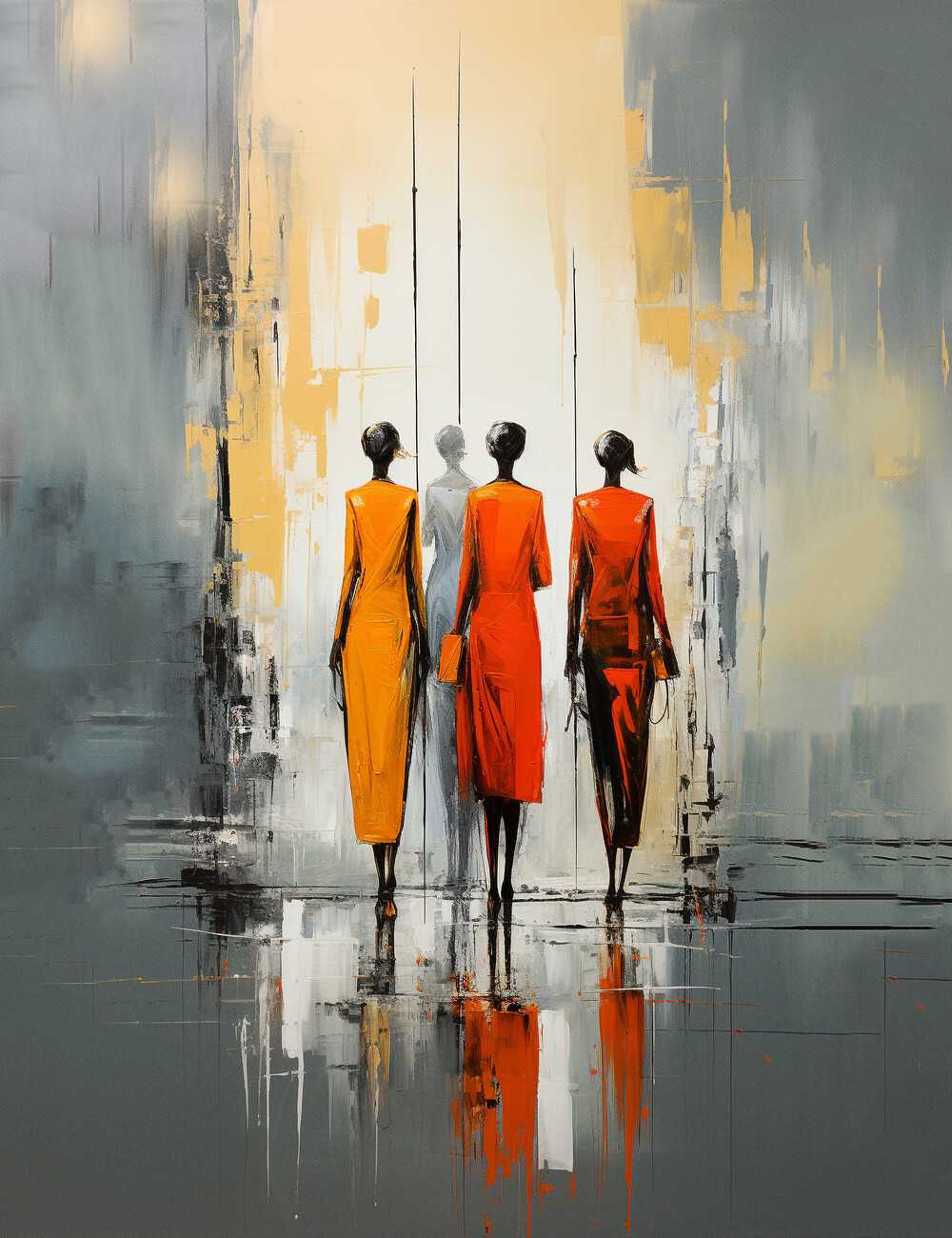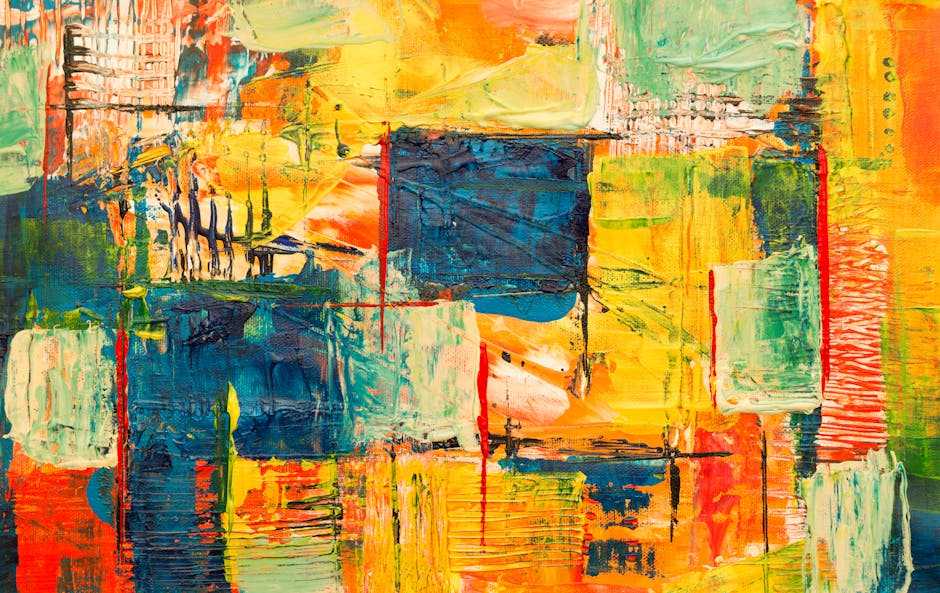Table of Contents
- Exploring the Essence of Abstract Art
- Techniques and Styles of Renowned Abstract Painters
- Choosing the Perfect Abstract Painting for Your Space
- Incorporating Abstract Art into Modern Interiors
- Q&A
- In Summary


Exploring the Essence of Abstract Art
Abstract art defies traditional boundaries, fostering a visceral connection between the viewer and the canvas. Its essence lies not within the tangible realities, but in the evocative emotions stirred by form and color. Each brushstroke resists clarity while inviting personal interpretation, allowing every observer to weave their own narrative. This genre empowers artists to communicate through visual language, bypassing the constraints of representational form, to tap into the subconscious and the spiritual.
Abstract art invites contemplation and introspection, often evoking a unifying experience through its universal themes. Its fluidity emerges through varying techniques such as dripping, splattering, or layering paints to evoke movement and depth. Common attributes include:
- Color Harmony: Carefully selected palettes that elicit specific emotions.
- Geometric Form: Use of shapes to create balance or tension.
- Expressive Texture: Layers of paint or mixed-media elements adding dimension.
Investigating the works of renowned abstract artists uncovers the multitude of styles and methodologies embraced within this genre. These innovators often sought to challenge perceptions and explore new perspectives. For instance, Wassily Kandinsky prioritized spiritual experience over accurate reproduction, while Jackson Pollock’s dynamic techniques revolutionized the field of painting. These experiences highlight the core of abstract art, which encourages artistic freedom and personal expression.
In essence, abstract art is characterized by its openness and diversity. Its allure often lies in its capacity to resonate on an emotional level, transcending the commonplace to provoke thoughtful reflection. Consider the varied elements that define abstract works through a simple comparison:
| Technique | Defining Characteristic |
|---|---|
| Dripping | Spontaneity |
| Layering | Complexity |
| Color Field | Emotion |
Through such exploration, abstract art emerges as a powerful medium for self-expression, inviting viewers to engage not only with the canvas but with their own emotions and interpretations.
Techniques and Styles of Renowned Abstract Painters
The world of abstract art is a vibrant tapestry of diverse techniques and stylistic nuances. One such technique is action painting, brilliantly exemplified by Jackson Pollock’s energetic drippings and dynamic brushstrokes. This style captures the essence of spontaneity, where artists express their innermost emotions directly onto the canvas without premeditation. Through these bold gestures, Pollock transformed the act of painting into a performance, offering viewers a glimpse into the boundless potential of unrestrained creativity.
Another fascinating approach within this genre is color field painting, a movement closely associated with artists like Mark Rothko. Here, vast expanses of color envelop the observer in a meditative experience. Rothko employed large, solid blocks of color, inviting contemplation and evoking profound emotional responses. The simplicity and purity of these hues challenge traditional notions of form, focusing instead on the visceral impact of color and its power to communicate.
- Art Informel: Emphasizes improvisation and freedom from form.
- Minimalism: Utilizes simplicity and reduction to find beauty in the bare essentials.
- Cubism: Abstracts form through geometric shapes and fragmented perspectives.
| Painter | Technique | Notable Work |
|---|---|---|
| Jackson Pollock | Action Painting | “No. 5, 1948” |
| Mark Rothko | Color Field Art | “Orange, Red, Yellow” |
The realm of abstract art is also enriched by artists who delve into geometric abstraction, where precision and mathematical forms take center stage. Pioneered by figures such as Piet Mondrian, this style seeks to harmonize colors and shapes with purpose, often through rigid grids and primary colors. By reducing elements to their simplest forms, geometric abstraction challenges viewers to explore the underlying structure of visual reality and the harmony within simplicity.


Choosing the Perfect Abstract Painting for Your Space
When selecting an abstract painting that complements your environment, consider the emotion and energy you wish to evoke. Paintings with bold colors and dynamic shapes can infuse a space with energy and inspiration, perfect for living rooms and creative spaces. Meanwhile, artworks with pastel hues and gentle curves bring a sense of tranquility, making them ideal for bedrooms or meditation areas. Remember, the right painting can transform the ambiance of an entire room, reflecting your personality and enhancing your living experience.
Lighting plays a crucial role in showcasing abstract art effectively. Natural light highlights colors and textures, enriching the visual experience. If your space lacks natural light, consider installing adjustable lighting to focus on the piece. Consider these lighting tips:
- Use spotlights to highlight specific elements within the artwork.
- Dimmable wall lights create ambiance while maintaining attention on the art.
- Track lighting offers flexibility in illuminating multiple pieces.
Incorporating a theme can aid in selecting a cohesive abstract piece. If your room follows a modern theme with sleek furniture, choose a painting with geometric patterns or metallic tones to enhance that aesthetic. Conversely, a rustic theme might benefit from warm, earthy abstractions. Integrating a thematic approach not only enhances harmony but also serves as a conversation starter, giving depth to your decor with stories that reflect broader design choices.
| Element | Suggestion |
| Color Palette | Match or contrast with furniture tones |
| Size & Proportion | Balance with wall and furniture dimensions |
| Art Medium | Choose from canvas, oil, acrylic, or digital |


Incorporating Abstract Art into Modern Interiors
- Choose pieces with bold colors to energize a space.
- Use contrasting textures for depth and interest.
- Incorporate neutral palettes for a calming effect.
| Placement | Style Suggestion |
|---|---|
| Above Sofa | Large, landscape-oriented canvas |
| Entryway | Triptych for a dramatic entrance |
| Dining Room | Panel arrangement for visual impact |
